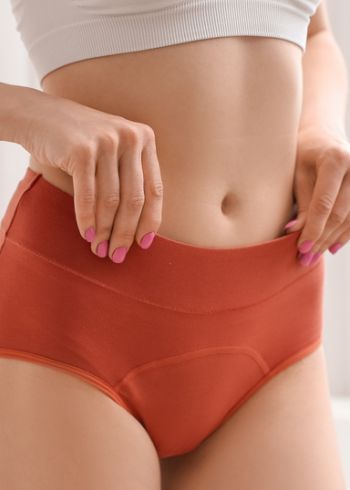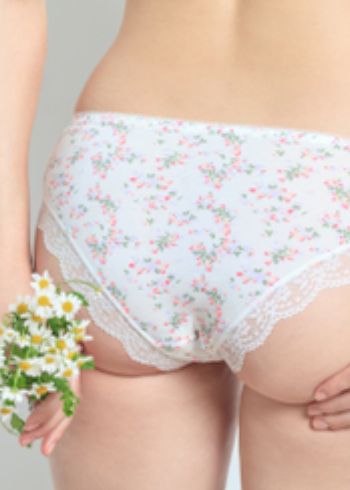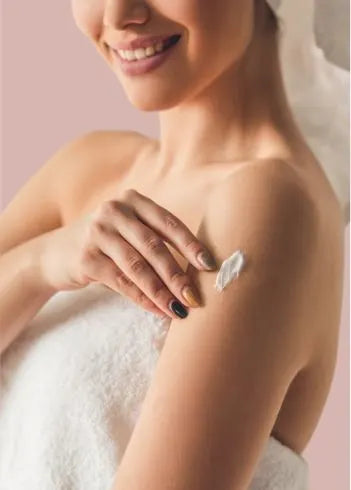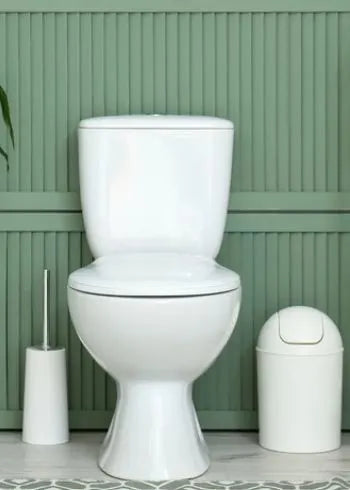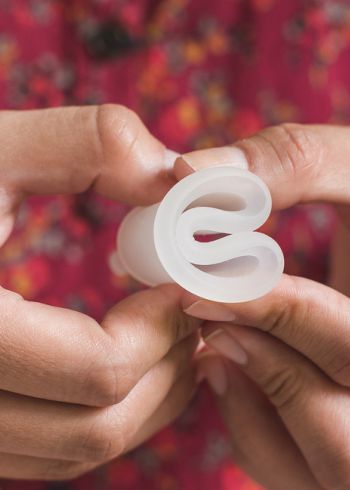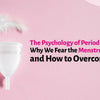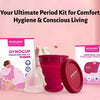Menstrual Cups for Teens: When’s the Right Time to Introduce Them?
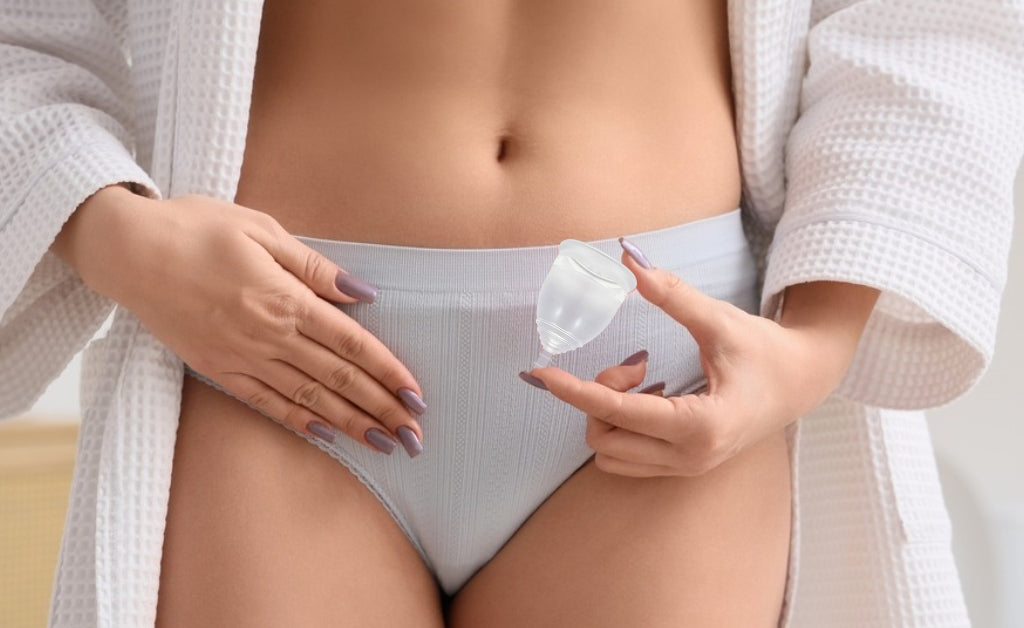
Menstrual Cups for Teens: When’s the Right Time to Introduce Them?
Navigating the journey of adolescence brings a myriad of changes, and for many teenagers, managing menstruation becomes a significant aspect of this transition. With the evolving landscape of menstrual products, menstrual cups have emerged as a sustainable and health-conscious alternative to traditional pads and tampons. But when is the right time for teens to make the switch? This guide aims to provide parents and teenagers with insights into introducing menstrual cups during the teenage years.
Understanding Menstrual Cups
A menstrual cup is a flexible, bell-shaped device made from medical-grade materials like silicone or latex, designed to collect menstrual blood rather than absorb it. Unlike disposable products, menstrual cups are reusable, offering both environmental and economic benefits. They can be worn for up to 12 hours, depending on the flow, and are known for their leak-proof and odor-free properties.
Benefits of Menstrual Cups for Teens
1. Environmental Impact: An individual can use a single menstrual cup for several years, significantly reducing the waste generated by disposable products.
2. Cost-Effectiveness: While the initial investment is higher, the longevity of menstrual cups leads to substantial savings over time.
3. Health Benefits: Menstrual cups are free from chemicals and fragrances found in some disposable products, reducing the risk of allergic reactions and irritation.
4. Convenience: With the capacity to hold more fluid than tampons or pads, menstrual cups require less frequent changes, making them ideal for school days and extracurricular activities.
Addressing Common Concerns
Introducing menstrual cups to teenagers may come with apprehensions. Here are some common concerns and how to address them:
· Insertion and Removal: It's natural for teens to feel anxious about inserting and removing the cup. Practice and patience are key. Starting with a smaller-sized cup can ease the process.
· Hygiene: Maintaining cleanliness is crucial. Teens should be educated on washing their hands before and after handling the cup and sterilizing it between cycles.
· Physical Activity: Menstrual cups are suitable for sports and swimming, offering leak-proof protection during physical activities.
· Social Acceptance: Open conversations can help normalize the use of menstrual cups among peers, reducing any stigma associated with their use.
When Is the Right Time?
The readiness to use a menstrual cup varies among individuals. Factors to consider include:
· Comfort with One's Body: Teens who are comfortable with their anatomy may find it easier to use menstrual cups.
· Menstrual Experience: Those who have had several menstrual cycles may be more attuned to their flow and body, making the transition smoother.
· Personal Preference: Some teens may prefer to start with external products before moving to internal options like cups.
It's essential to ensure that the decision is teen-led, with support and information provided by parents or guardians.
GynoCup by MILDCARES: A Teen-Friendly Option

GynoCup offers a menstrual cup specifically designed for teenagers. Crafted from 100% medical-grade silicone, it ensures safety and comfort. The teen cup features a balance of firmness for easy placement and smoothness for comfortable insertion. Its Lichen Stem design facilitates hassle-free removal without irritation. With the capacity to provide up to 12 hours of protection, GynoCup supports an active teenage lifestyle.
Tips for Parents
1. Open Dialogue: Foster an environment where menstruation and menstrual products can be discussed openly and without judgment.
2. Provide Resources: Share educational materials and reputable sources to help your teen make an informed decision.
3. Respect Autonomy: Allow your teen to choose the menstrual product that aligns with their comfort and lifestyle.
4. Offer Support: Be available to assist with initial attempts at using the cup and address any challenges that arise.
Conclusion
The transition to using a menstrual cup is a personal decision that should be made based on individual comfort and readiness. By providing accurate information and a supportive environment, parents can empower their teenagers to make choices that best suit their menstrual health needs. GynoCup stands as a reliable option for teens considering this sustainable and health-conscious alternative.
10 Frequently Asked Questions (FAQs)
1. Is it safe for teens to use a menstrual cup?
Yes, menstrual cups are completely safe for teens when used correctly. They are made of medical-grade silicone, which is non-toxic and hypoallergenic. It's just important to ensure hygiene and pick the right size.
2. Won’t inserting a cup be painful for a teen or first-time user?
It might feel uncomfortable at first, but with practice, most users get used to it. Starting with a smaller or teen-sized cup like the one from GynoCup makes it easier. Using a water-based lubricant can also help.
3. Can a menstrual cup affect virginity or the hymen?
No, virginity is not determined by the hymen or using a menstrual product. While inserting a cup may stretch or tear the hymen, it doesn’t impact one’s virginity, which is a cultural concept rather than a medical one.
4. How do I know if my teen is ready to try a menstrual cup?
If your teen has expressed interest, is comfortable with their body, and has had a few cycles, it could be a good time. Let it be their choice, not a forced shift.
5. How long can a teen wear a menstrual cup safely?
A menstrual cup can be worn for up to 8–12 hours, depending on the flow. Most teens will find it convenient for school hours or long travel.
6. How does my teen clean or sterilize the cup?
During periods, the cup can be rinsed with clean water after every use. Before and after each cycle, it should be sterilized by boiling it in water for 5–10 minutes. GynoCup even offers sterilizer container and cleansing liquid to make the process easier.
7. What if the cup leaks at school or during sports?
If inserted properly and emptied at the right time, leakage is rare. But as a backup, wearing a panty liner during initial use builds confidence until your teen figures out their rhythm.
8. Can a teen wear a menstrual cup while swimming or doing yoga?
Absolutely! Menstrual cups are a great option for physical activities. They stay in place, don’t absorb water, and offer a leak-proof experience, unlike pads or tampons.
9. Is it hard for teens to remove a menstrual cup?

It can take a few tries, but it’s not difficult. Teens should be taught to relax, break the seal by pinching the base of the cup, and remove it gently. Starting at home, not during school, is a good idea.
10. Why choose GynoCup for my teen’s first menstrual cup?
GynoCup offers a specially designed teen cup that’s softer, smaller, and more flexible. It’s made from 100% medical-grade silicone, comes with a step-by-step user guide, and has a strong community of supportive users.

